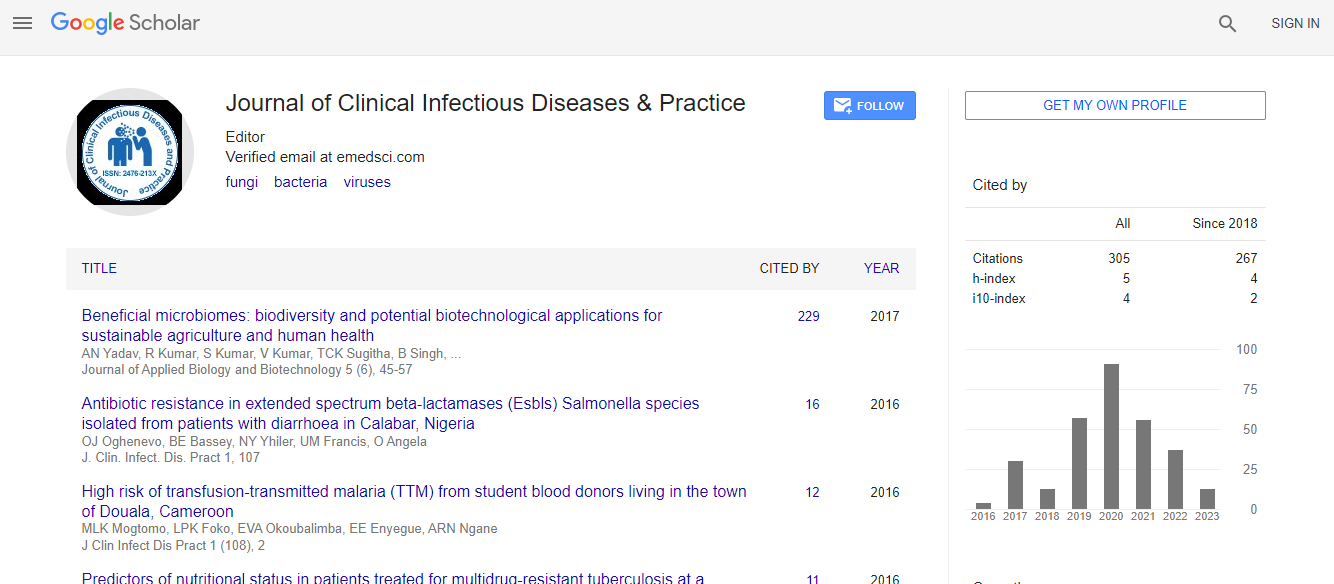Our Group organises 3000+ Global Conferenceseries Events every year across USA, Europe & Asia with support from 1000 more scientific Societies and Publishes 700+ Open Access Journals which contains over 50000 eminent personalities, reputed scientists as editorial board members.
Open Access Journals gaining more Readers and Citations
700 Journals and 15,000,000 Readers Each Journal is getting 25,000+ Readers
Google Scholar citation report
Citations : 531
Journal of Clinical Infectious Diseases & Practice peer review process verified at publons
Indexed In
- Google Scholar
- RefSeek
- Hamdard University
- EBSCO A-Z
- Publons
- ICMJE
Useful Links
Share This Page
Gene Silencing Approach for an orphan GNAO1-related neurodevelopmental disorder
9th World Congress on Rare Diseases and Orphan Drugs
Maryana Bardina, Anna Polikarpova, Elizaveta Loseva, Svetlana Vassilieva and Tatiana Egorova
Marlin Biotech LLC, RussiaInstitute of Gene Biology-RAS, Russia
Posters & Accepted Abstracts: J Clin Infect Dis Pract
Abstract
GNAO1 disorder is a fatal genetic neurodevelopmental disease characterized by epilepsy and movement impairment that begins in early infancy. GNAO1 gene is highly expressed in the brain and certain de novo mutations in this gene result in production of toxic protein that causes dysregulation in neuronal signaling. Currently no effective treatment is available for this pathology. Our aim at Marlin Biotech is to find gene therapy cure for GNAO1 disorder. Considering autosomal dominant condition of this disease, we suggest a strategy of allele-specific gene suppression that would selectively lower levels of abnormal protein in the brain neurons and leave functional protein unaffected. To test gene therapy approach in vitro, we developed an assay with expression of exogenous wild type or mutant (c.607 G>A) GNAO1 variants in cultured cells. We screened synthetic siRNA duplexes that target mutation site in GNAO1 RNA and downregulate expression of mutated gene through RNA interference (RNAi) pathway. Our data demonstrates that two RNAi effectors reduce accumulation of mutant GNAO1 transcripts in allele-specific manner. These results were confirmed at RNA and protein levels in heterozygous assay where both wild type and mutant GNAO1 variants were introduced into cells simultaneously in 1:1 ratio to mimic heterozygous condition of the patients. Taken together, our pilot experiments demonstrate the potential of allele-specific silencing approach for gene therapy of GNAO1-related neurodevelopmental disorder. Our next step is designing RNAi-based therapeutics for GNAO1 disorder that is compatible with delivery via adeno-associated virus (AAV) vectors to brain tissues. To validate beneficial effect of AAV-RNAi technology in vivo, we are also developing humanized mouse model of GNAO1 disorder using CRISPR/Cas9 technology.Biography
Maryana Bardina has obtained her PhD in Molecular Virology at Lomonosov MSU, Moscow, Russia and completed training in viral vector design and gene suppression technologies at ICGEB, Trieste, Italy. She has joined Marlin Biotech in 2016 and developed methods for AAV production and purification. From November 2017, she leads the project on GNAO1 disorder aiming at finding gene therapy cure for this neurological disease.
E-mail: m.bardina.marlin@gmail.com

 Spanish
Spanish  Chinese
Chinese  Russian
Russian  German
German  French
French  Japanese
Japanese  Portuguese
Portuguese  Hindi
Hindi 
